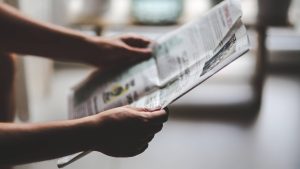What to See on a Map of Brisbane, Australia


When you’re planning a trip to Brisbane, you’ll likely want to include a look at the city’s top attractions. The cultural scene is especially rich, with the Queensland Art Gallery and the Queensland Museum nearby. If you’d like to get an idea of what to see on a Brisbane map, here are some things to keep in mind. For starters, there’s the City Hall, the Queensland Museum, and the State Library of Queensland. These are just a few of the museums and art galleries that are within walking distance of each other.
The first protests occurred in the city center in 1886, when a group of Tramway employees was lynched for wearing union badges. This resulted in the first general strike in Australia. The strike, which lasted for about a month, was later dubbed Black Friday due to the police baton charges on crowds of unionists. Meanwhile, the Australian Government raided the Queensland Government Printing Office, attempting to confiscate Hansard, which covered anti-conscription sentiments.
Brisbane is the capital of the state of Queensland, Australia. It is the third-largest city in Australia and is home to the state’s government. The city is geographically sprawled and accessible by public transport, making it easy to visit different parts of the city. Each neighborhood reveals a different side of the city. There are many public transportation options, including the Airtrain and the entire TransLink system.
The central business district is located in a bend of the Brisbane river, and covers an area of 2.2 km2 (0.8 sq mi). The city’s most famous street is named after a member of the House of Hanover, Queen Street, and King George Square. The city’s largest pedestrian mall is Queen Street, and is adjacent to Post Office Square, which houses the central war memorial. The city also offers a range of smaller markets scattered throughout the city.
When you want to plan a trip to Brisbane, a good map can be a useful guide. The UBD Gregory Brisbane map is the most detailed and comprehensive of all the city’s suburbs. It covers areas from the city’s center to McDowall in the northwest, Nudgee in the northeast, and Willawong in the southwest. The UBD Gregory map even includes postcodes and national parks.
If you’re a culture vulture, South Bank is the city’s cultural centre. Situated two miles south of the central business district, South Brisbane is home to the Queensland Art Gallery and the Gallery of Modern Art. It is split into two parts, each with its own distinct culture. You can take a stroll or visit a museum. For families, the Lone Pine Koala Sanctuary can be a welcome escape from your hectic work schedule.
The city is covered by the Queensland Health Metro North and Metro South Health Service Networks. The city is home to eight large public hospitals and numerous smaller public and private hospitals. The Royal Brisbane and Women’s Hospital is the third-largest trauma centre in the state. Other major public and private hospitals include the Princess Alexandra Hospital, the state’s largest hospital, which houses the Translational Research Institute (Australia). The Prince Charles Hospital is a leading cardiac transplant centre.
When planning a trip to Brisbane, consider the weather. The city’s weather is relatively predictable and temperate compared to other Australian capitals. Summers are hot and humid, with an average maximum temperature of 26.6 degC, while winters are cool and dry, with only two months of rain per year. Brisbane’s average dewpoint is 20 degrees Celsius and its apparent temperature is over 30 degC. The wettest day was 21 January 1887, with 465 millimetres of rain, equal to 18.3 inches of rain.
The Brisbane River is the city’s biggest dividing line, and many of its major roads and railway stations are located within its inner city. The river itself forms a natural barrier to road transport. Road bridges generally include provisions for cyclists and pedestrians. Other bridges, such as the Albert and Merivale bridges, are designed for trains. And there are several suburban bus routes, including the high-frequency Blue CityGlider and Maroon Skyrail.
The city is home to numerous native and exotic birds and wildlife, including the iconic rainbow lorikeets and kookaburras. Birdwatching enthusiasts can also enjoy the local wildlife, which includes possums and Australian white ibises. Several other native plants and animals are common in the city, including macadamia nuts and blackberries. There’s something for everyone in Brisbane, and it’s sure to please your taste buds.


